Network diagram software plays a crucial role in helping businesses understand their network and how their network components interact. This guide explains what a network diagram is and how network diagram software can help your business improve efficiency, in addition to recommending the best software for network diagrams available today.
SolarWinds® Network Topology Mapper (NTM) ranks highest on our list of the best network diagramming software because it provides detailed network diagram capabilities in a user-friendly interface. This advanced and scalable network diagram tool offers an impressive range of features, giving businesses access to everything they might need to create comprehensive and automated network diagrams. A 14-day free trial of SolarWinds NTM is available to get you started.

Skip to Best Network Diagram Software List >>>
What Is a Network Diagram?
A network diagram provides a visual depiction of a computer network, displaying all network elements or “nodes” and how they fit together. This can include devices, firewalls, hubs, routers, switches, and any other network components.
Network diagrams can be extremely detailed, provide a simple overview, or be somewhere in between. As an example, a LAN network diagram could display IP addresses for individual devices, while a Metropolitan Area Network (MAN) diagram might simply represent physical areas or buildings with one node.
There are two types of network diagram: physical and logical.
What Is a Physical Network Diagram?
Physical network diagrams, as the name suggests, display the material organization of the network components. This usually includes hardware, cables, and other physical network components. A physical network diagram is similar to a floorplan, giving you insight into the actual arrangement of your network’s tangible elements.
What Is a Logical Network Diagram?
Logical network diagrams, on the other hand, represent how data moves through the network. As such, a logical network diagram usually displays routing protocols, network devices (i.e., firewalls and routers) and subnets (i.e., addresses, masks, VLAN IDs).
According to the Open Systems Interconnection model, a logical network diagram should be aligned with data hosted by Layer 3, which is called the network layer. The network layer, or Layer 3, leverages intermediate routers to manage packet forwarding activities. It acts as an abstraction layer.
Why Are Network Diagrams Useful?
A network diagram can be used for a range of purposes, including but not limited to the following:
- Designing how a professional or home network is structured
- Planning updates to your current network
- Tracking network components
- Delivering important data to vendors as part of a Request for Proposal (RFP) without disclosing sensitive information
- Selling network proposals to stakeholders
- Proposing changes to syslog infrastructure at a high level
- Troubleshooting and reporting on any network issues
- To support compliance with standards and requirements, such as PCI
- As documentation for both external and internal communications
Best Software for Network Diagrams
Designing and managing your network infrastructure can be complicated and time-consuming when businesses aren’t leveraging enterprise-grade network diagramming software. Network diagram software can provide you with comprehensive insights into your network, helping you identify and diagnose issues, plan for future network updates, support compliance, and much more.
Choosing the right network diagram tool for your business, however, can be a challenge. To help you make an informed decision, I’ve compiled a list of the best network diagramming software solutions currently available.
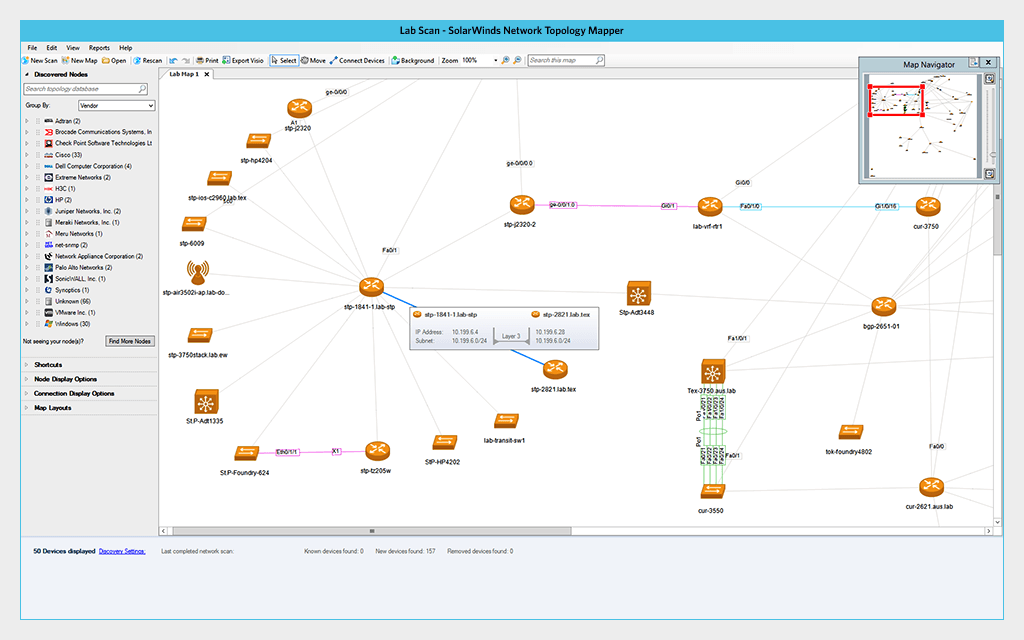
© 2020 SolarWinds Worldwide, LLC. All rights reserved.
I believe the SolarWinds IT management and monitoring tools are among the most popular business solutions on the market, covering everything from remote access and support to network performance monitoring. I also think SolarWinds solutions, including their well-known Network Performance Monitor, are built to be scalable, user-friendly, and provide an advanced range of utilities—many of which are unique and ahead of the market curve. SolarWinds has a reputation for dependability and offers plenty of customer support initiatives, including 24/7 technician availability. Another useful support feature from SolarWinds is the THWACK® community forum, where customers can access a community of avid users to gain insight into how best to leverage SolarWinds products.
SolarWinds Network Topology Mapper (NTM) is ranked as the best network diagram software because it offers a high level of automation, saving you time and improving efficiency. With NTM, you can create an automated network diagram and auto-discover your LAN or WAN. NTM achieves this by leveraging a discovery method capable of examining multiple layers of the network. This means your network diagrams are fully integrated with topology data from both layer 2 and layer 3 of the OSI—including switch-to-router, switch-to-switch, and switch-to-node port connections. You can also use NTM’s automated discovery features to modify the node information of objects on your network map. You can even manually connect your network devices.
One of the key benefits of using NTM as your computer network diagram and network security diagram solution is you can export all your network data in an intuitive, easy-to-read format. Files can be exported in PNG, PDF, and Microsoft Visio, giving you plenty of options and flexibility. With NTM, you can also schedule your network maps to be exported to the unique Network Atlas utility, which allows you to design custom network diagrams and maps. For ease of collaboration, you can share exported maps with your team.
As a program compliant with FIPS 140-2, this network switch diagram solution helps you prove compliance with regulatory standards. It helps you address requirements, such as PCI, to certify your corporate network is ready for auditing and continuously updated.
To save you time and effort, NTM can detect network topology changes regularly, and automatically updates your network diagrams and network switch diagrams to reflect any alterations. You can configure NTM to schedule scans according to your company’s individual requirements, so you’re always notified of new network devices. NTM also includes reporting utilities such as network and inventory reports. You can generate reports for subnets, switch ports, and VLANs. Report generation can be automated, keeping the need for manual intervention to a minimum.
NTM provides support for numerous discovery techniques, including VMware, Hyper-V, ICMP, WMI, CDP, and versions 1, 2, and 3 of SNMP. This range of options gives you more choice than many alternative network switch diagram tools can provide.
I believe SolarWinds products are well-known as user-friendly tools, and NTM is no exception. NTM’s range of automated utilities allows you to generate, update, share, and export network diagrams with minimal time investment. This network switch diagram tool also allows for manual intervention, which means you can modify settings to reflect your company’s individual needs. You can even customize the placement and size of your network diagrams’ icons and text.
You can try NTM for free by taking advantage of a 14-day free trial.
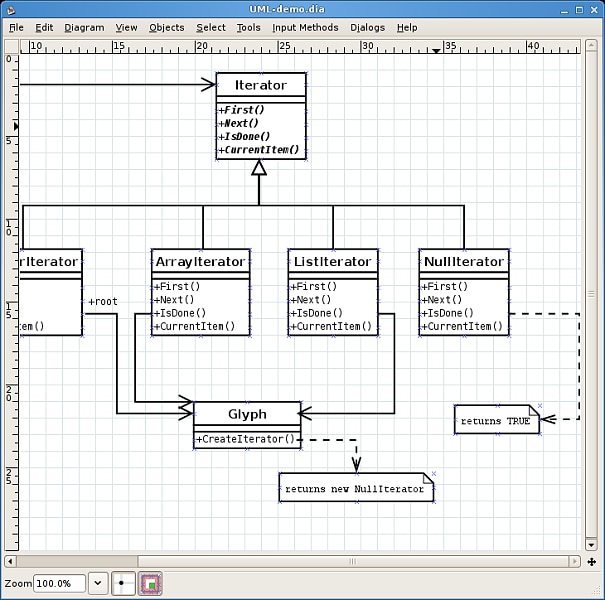
© 2020 The Dia Developers. All rights reserved.
Dia Diagram Editor is a free, open-source solution designed to help you create network diagrams quickly and easily. Although this tool doesn’t offer a particularly dynamic or sophisticated interface, its simplicity may appeal to individuals who are new to network diagramming software.
The Dia Diagram Editor is one of the most popular free network diagram tools, primarily because it offers a huge objects library. The impressive library provides users with extra flexibility when creating network diagrams and maps. This tool also includes a significant amount of Cisco-based components, covering network, switch, computer, miscellaneous, and telephony diagrams.
Although Dia Diagram Editor is a functional solution, the rudimentary nature of its interface is a notable disadvantage. Like most free solutions, I felt Dia Diagram Editor isn’t especially scalable or suited to business use. Despite this, Dia Diagram Editor can create detailed network diagrams. This tool can be used with Mac, Linux, and Windows operating systems. Dia Diagram Editor can be downloaded here.
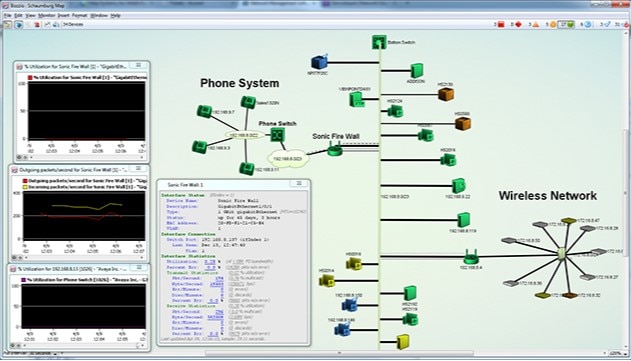
© 2020 HelpSystems. All rights reserved.
Intermapper, from Help Systems, is a network topology mapper and network monitoring tool for Mac, Linux, and Windows. This solution provides you with advanced insight into your network performance and configuration, featuring a graphics editor with a substantial icons library. Intermapper also allows you to create custom icons to suit your needs and preferences.
Intermapper auto-discovers your network devices, then diagrams them onto real-time network maps. You can customize these maps to capture your business’ unique IT systems and infrastructure, by using the hundreds of background images, layout options, and icons available in Intermapper.
In addition to providing network diagramming features, Intermapper also includes network monitoring capabilities. You can use this tool to store your network’s performance data, which assists with reporting on SLA compliance and capacity planning. Intermapper uses hierarchical mapping, enabling you to visualize and interpret network status at a glance via the top-level map, as well as drill into sub-maps based on office location, closet, floor, and other components. To make data interpretation quick and easy, Intermapper color-codes network equipment status. This network diagram tool also displays traffic flow, which updates in real time.
With its ability to provide instant insight and its simple drag-and-drop interface, Intermapper delivers an impressive network diagramming solution. However, I think the user interface is basic and, because of this, the tool isn’t particularly intuitive. A free version of Intermapper is available, although it limits you to monitoring up to five devices. You can also try a 30-day free trial of the paid edition.
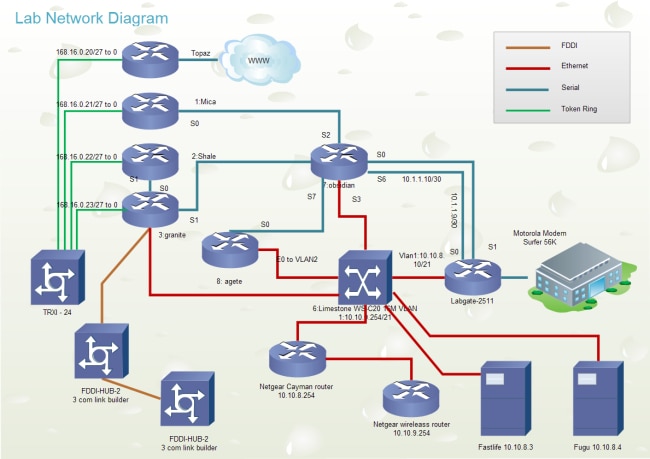
© 2020 Edrawsoft. All rights reserved.
Edraw is all-in-one network diagram software that lets you create a range of diagrams, including flowcharts, fishbone diagrams, floor plans, UML diagrams, office layouts, and much more. There are upwards of 280 types of diagrams available with Edraw, from technical drawings to infographics.
With this tool’s impressive library of symbols and templates, network diagram beginners can start creating diagrams almost immediately. Edraw includes thousands of unique templates, each of which is intuitively and professionally designed. One of the most notable advantages of Edraw is its extensive file compatibility, allowing you to import files in Visio format, and export diagrams in multiple formats—including Word, HTML, Visio, PDF, JPEG, and more.
Edraw network diagramming software is available online, which means it can be accessed from anywhere, at any time, and from any device connected to the internet.
This network diagram tool allows you to collaborate with your colleagues, by enabling you to share network diagrams via social media, through an HTML link. As a cloud-based tool, multiple members of your team can work on a single project simultaneously, from different devices. To download Edraw, click here. You will have the option of choosing the web edition, or Mac, Windows, and Linux versions.
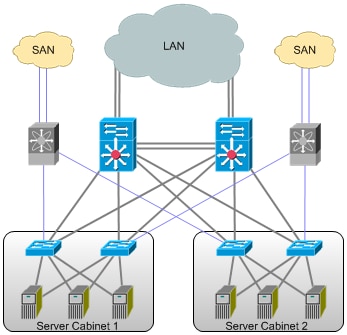
© 2020 Network Notepad Jason Green. All rights reserved.
Network Notepad is a good option for companies anticipating growth, but are currently new to network diagramming, because it offers multiple editions—this includes a freeware edition, an Enterprise Edition, and a Professional Edition. With the free version of Network Notepad, you can design interactive diagrams of your network. The free edition offers basic capabilities and includes support for Windows devices. With a basic drag-and-drop user interface, this is an easy-to-use solution.
The Professional Edition of Network Notepad includes all the free edition’s features, as well as customizable shapes, locking and grouping capabilities, multi-page diagrams in tabs, more advanced graphics, and increased object placement flexibility. The Network Notepad Enterprise Edition features all the functions listed above, in addition to supporting collaboration between multiple users.
Whichever Network Notepad edition you choose can be extended by the add-on CDP Neighbor Tool. This utility lets you discover your network and create a diagram by using a table retrieved directly from the appropriate network device. You can also implement NNMonitor, a ping tool, as an add-on for the Enterprise Edition and Professional Edition. NNMonitor enables email alerting and logging. I find a key disadvantage of Network Notepad is all add-ons must be downloaded separately, because they aren’t built in.
You can choose between the Network Notepad editions and download them here.
Choosing the Right Network Diagram Software
Of the tools featured in this list, SolarWinds Network Topology Mapper offers the most advanced, comprehensive, and user-friendly range of features. NTM’s automated features, including the automatic network discovery utility, give this solution a real edge over competitors. This tool requires little manual intervention, allowing you to generate, share, and export network diagrams quickly and easily.
SolarWinds NTM helps your IT team save resources and time, streamlining the network diagram creation process and minimizing the need for manual ongoing network diagram maintenance. With reporting features, multi-layer topology data integration, and numerous export options, NTM delivers an easy-to-use and advanced network diagram solution. This program is well-suited to business use, scalable, and ideal for small and large companies alike.